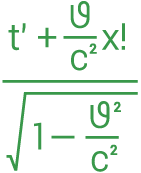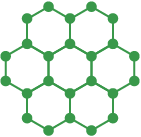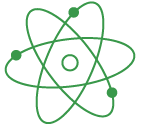The main areas of scientific research conducted at JINR are Theoretical Physics, Elementary Particle Physics, Nuclear Physics, and Condensed Matter Physics. Equally important role is given to Applied Research and development of Computer Networks and Distributed Computing. Experiments, studies and projects performed in these areas are described in great detail in the Topical Plan of JINR.

Theoretical Physics
It is a branch of physics using theoretical (primarily mathematical) modeling of phenomena and its comparison with reality as the main way of studying nature. In this definition, theoretical physics is an independent method of studying nature, although its contents are naturally formed taking into account experimental results and observations of nature.
Research in Theoretical Physics
Laboratories

Elementary Particle Physics
It is a branch of physics that studies the structure and properties of elementary particles and their interactions. Particle Physics looks into the very heart of our world. It is in a constant pursuit of answers to fundamental questions about the properties of matter, forces, space and time.
Research in Elementary Particle Physics
Laboratories

Nuclear Physics
It is a branch of physics that studies the structure and properties of atomic nuclei and their collisions (nuclear reactions). The problems arising in Nuclear Physics are typical examples of the many-body problem. The nuclei consist of nucleons (protons and neutrons), and typical nuclei contain tens or hundreds of nucleons. This number is too large for exactly solvable problems, and yet too small to allow using the methods of statistical physics. This fact has led to a wide variety of different models of atomic nuclei.
Laboratories

Condensed Matter Physics
It is a vast branch of physics that studies the behavior of complex systems (i.e. systems with a large number of degrees of freedom) with a strong coupling. The main feature of the evolution of such systems lies in the fact that this evolution (of the entire system) fails to be “separated” into the evolutions of individual particles. Therefore, it is necessary to deal with the system as a whole. As a result, often instead of the movement of individual particles collective oscillations have to be considered. In the quantum description, these collective degrees of freedom become quasi-particles. This is a rich field of physics, both in terms of mathematical models, and applications to reality.
Research in Condensed Matter Physics
Laboratories

Networks, Computing
Computing is a way of solving time-consuming computational problems using several computers, often combined in a parallel computing system. This includes the so-called grid computing, a form of distributed computing, in which a “virtual supercomputer” is presented in the form of clusters connected via a network of loosely coupled heterogeneous computers operating together to perform an enormous number of tasks (operations, jobs). This technology is used to solve scientific and mathematical tasks that require a significant amount of computing resources.Subjects of research in Networks and Computing
Laboratories

Applied Research
The experimental base of JINR allows conducting not only advanced fundamental research, but also applied research in the field of condensed matter physics, biology, medicine, materials science, geophysics, and engineering diagnostics. This applied research is aimed at studying the structure and properties of nanosystems, new materials, biological objects, as well as at the development and creation of new electronic, bio- and information nanotechnologies.
The strategy of further development of JINR as a multi-faceted international centre for fundamental research in nuclear physics and related fields of science and technology requires the effective use of the results of theoretical, experimental, methodological and applied research conducted at JINR in the field of high technologies through their implementation in industrial, medical and other technical development projects. It will provide fundamental research with additional sources of financing and will create additional employment.